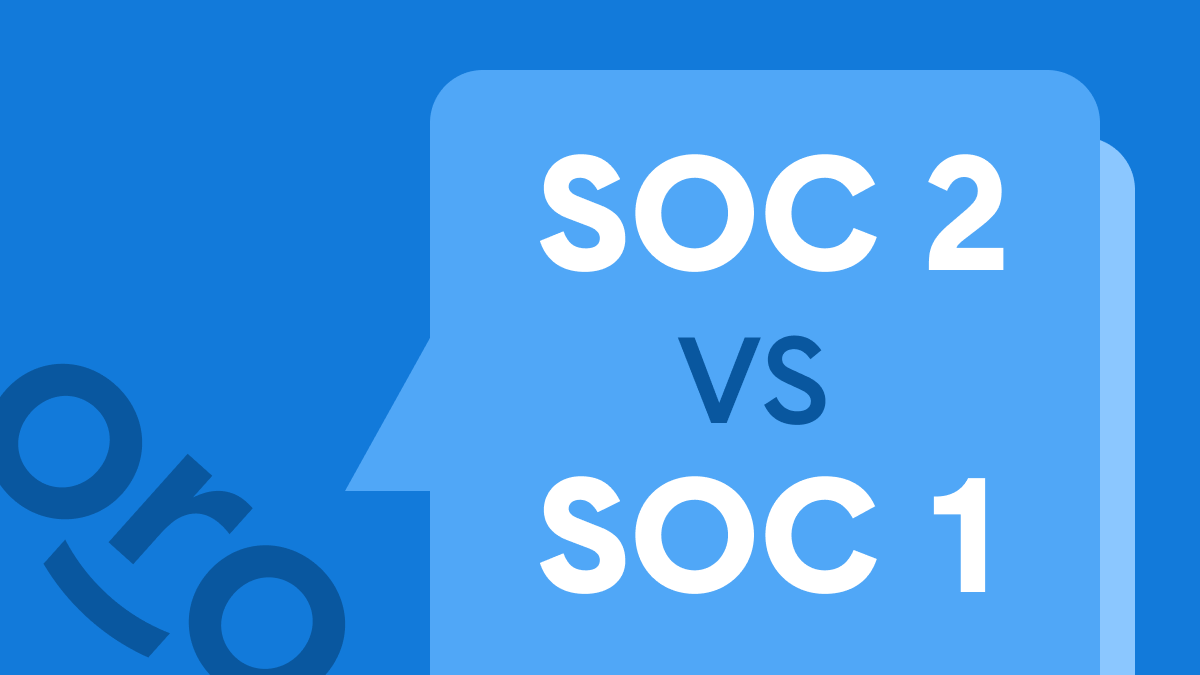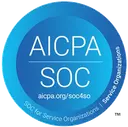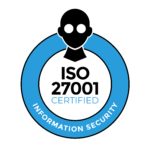SOC 2 vs SOC 1: A simple breakdown
Understanding compliance standards like Service Organization Control (SOC) reports is crucial for businesses, especially those handling sensitive customer data or financial information. These reports offer essential insights into a service organization's controls, building trust and demonstrating accountability to clients and partners. This guide provides a simple breakdown of SOC 1 and SOC 2 reports, clarifying their purposes, who needs them, and how they differ, helping you navigate the path to compliance.
What is SOC 1?
What does it test? Unlike SOC 2, SOC 1 homes in on internal controls that impact customer financial reporting and is tested based on objectives that the auditor and the business agree to. These objects depend on what your customers need for their own financial reporting. For example, how effective are auditors in evaluating tax statements? There are two types of SOC 1 reports: Type I and Type II.
Who needs it? Any enterprise will require its service providers to get a SOC 1 if they impact their financial reporting, even indirectly.
What is SOC 2?
What does it test? Service Organization Control 2 is a procedure that examines service providers. The audit determines if they are securely managing 3rd party data to protect and ensure privacy. SOC 2 uses the COSO framework to test your internal controls against five Trust Services Criteria: security, availability, confidentiality, privacy, and processing integrity. There are two types of SOC 2 reports: Type I and Type II.
Who needs it? SOC 2 has become the gold standard for SaaS solutions. In many cases, enterprise buyers require all vendors to get SOC 2 compliance. This makes the audit particularly important for growth-focused B2B startups that are starting to attract enterprise customers in order to move upmarket. Today, more SaaS startups than ever choose to pursue SOC 2 in order to satisfy enterprise customers’ needs.
Key Differences: SOC 1 vs. SOC 2
As we see, SOC 1 and SOC 2 reports differ in their focus, audience, criteria, and use cases.

From the table, we can see that both types of reports play an important role in modern digital enterprises. Having a robust auditing platform that can cover both report types helps an enterprise build trust with its customers and maintain compliance.
How similar are SOC 1 and SOC 2 reports?
Both SOC 1 and SOC 2 reports come in different flavors. A Type I audit tests the design of your compliance program at one point in time. A Type II audit, on the other hand, tests not only your compliance program but also the operating effectiveness of controls over time. Regardless of which SOC you’re after, most businesses should start with a Type I and build towards a Type II, unless a specific client requires a Type II immediately. While Type I offers a snapshot of control design, Type II provides ongoing assurance, which is often preferred by larger enterprises. (More on SOC 2 types here)
When do you need a SOC report?
Increased regulations, security threats, and data protection standards are pushing compliance requirements downstream. The longer you wait, the more complex, time-consuming, and costly implementing SOC compliance will be. Technical and operational debt will accrue and complicate changing organizational behaviors.
Many businesses pursue a SOC report when their clients, particularly enterprise customers, begin requesting evidence of robust internal controls as part of their vendor assessment process. This is especially true for B2B SaaS companies whose services are critical to their clients' operations or data handling. Pursuing a SOC report proactively can prevent potential deals from stalling and demonstrate a commitment to security and transparency.
SOC Compliance with Thoropass
Thoropass compliance platform offers auditing services and compliance automation, delivering enterprise-grade audits at AI native speed. Thoropass automation provides accurate timelines, clear goals, and streamlined processes that remove the headaches of SOC audits. Together with Thoropass’s auditor teams, you can get your compliance up to speed without getting lost in the weeds. Get started with Thoropass today by talking to one of our experts.
FAQ
What are the primary benefits of obtaining a SOC 1 or SOC 2 report?
Obtaining a SOC 1 or SOC 2 report demonstrates a commitment to security, transparency, and effective control management, which is crucial for building trust with customers and partners. These reports validate that an organization handles sensitive data and financial information responsibly, often satisfying enterprise buyers' requirements and facilitating business growth. They can also streamline audit processes and help avoid potential deal-blocking compliance issues as a company scales.
How long does the process of obtaining a SOC 1 or SOC 2 report typically take?
The timeline for obtaining a SOC 1 or SOC 2 report can vary significantly based on factors like the report type (Type I vs. Type II) and the organization's readiness and complexity. While a Type I report, which assesses controls at a point in time, might be quicker, a Type II report, evaluating controls over a period, typically takes a minimum of six months to a year to complete. Initial preparation, control implementation, and the audit itself all contribute to the overall duration.
Are SOC 1 and SOC 2 reports legally required for all businesses?
SOC 1 and SOC 2 reports are not universally mandated by law for all businesses; instead, they are driven primarily by customer demands, industry best practices, and contractual obligations. While increased regulations and security threats push many organizations toward compliance, the need for a SOC report often arises when service providers impact a client's financial reporting (SOC 1) or handle sensitive data (SOC 2), especially for B2B SaaS companies. Obtaining these reports helps to build and maintain trust, secure new deals, and meet the specific assurance needs of client organizations.
Who is the primary intended audience for a SOC 1 report compared to a SOC 2 report?
The primary audience for a SOC 1 report consists of the service organization's clients and their financial statement auditors, as it focuses on controls relevant to internal control over financial reporting. In contrast, a SOC 2 report is typically intended for a broader range of users, including clients, business partners, and regulatory bodies, who need assurance regarding data security, privacy, and system integrity. The choice between reports depends on whether the service impacts a client's financial statements or their data protection requirements.

Related Posts
Stay connected
Subscribe to receive new blog articles and updates from Thoropass in your inbox.
Want to join our team?
Help Thoropass ensure that compliance never gets in the way of innovation.













.png)